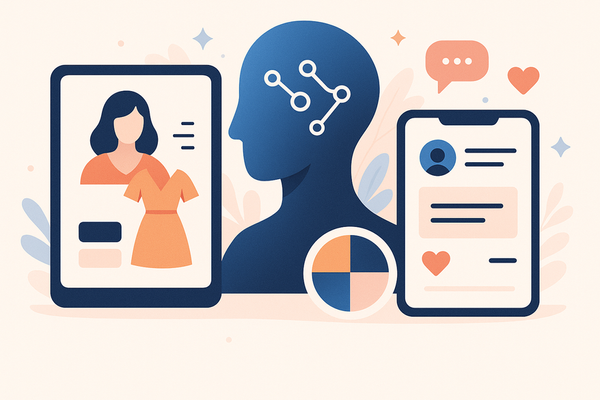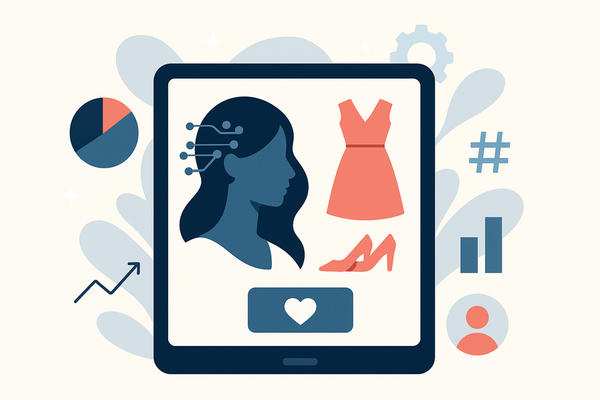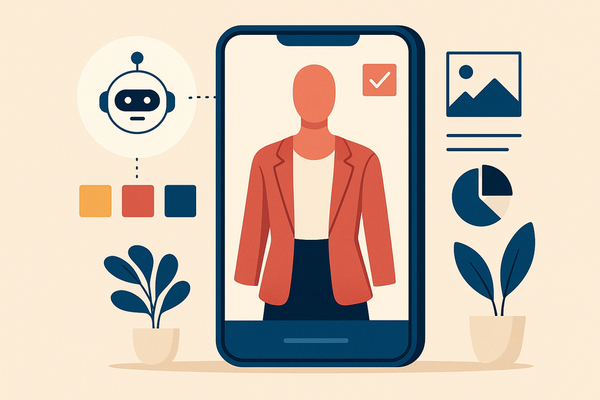How Fashion Trend Analysis AI Is Transforming the Industry
Discover how fashion trend analysis AI is transforming the industry by providing data-driven insights, enhancing forecasting accuracy, and optimizing product offerings.

Estimated reading time: 8 minutes
Key Takeaways
- AI-driven insights: Replace intuition with data-backed trend forecasting.
- Speed and accuracy: Machine learning and image recognition accelerate predictions.
- Sustainability impact: Reduces overproduction and waste through precise demand forecasting.
- Emerging tech: AR and virtual try-ons set the stage for personalized experiences.
Table of Contents
- Understanding Fashion Trend Analysis
- Role of AI and Machine Learning
- Big Data and Data Collection
- Benefits and Algorithmic Bias
- Case Study: Demand Forecasting
- Future AR and Virtual Try-On
- Supporting Your Personalized Style Journey
- Conclusion
Understanding Fashion Trend Analysis
Fashion trend analysis is the systematic study of style evolution, consumer behaviors, and market signals to predict which designs, colors, fabrics, and silhouettes will become popular. Brands and designers rely on these forecasts to stay ahead of shifting tastes.
Traditional trend forecasting methods:
- Manual runway and street‐style observation
- Tracking influential fashion publications
- In-person retail analysis
- Surveys and focus groups
Why fashion trend analysis is crucial:
- Aligns product offerings with real demand
- Minimizes overproduction and waste
- Maximizes sales opportunities through timely launches
Without accurate trend forecasting, brands risk markdowns, excess inventory, and missed revenue.
Role of AI and Machine Learning in Fashion Trend Analysis
AI technologies automate and enhance each step of traditional forecasting, boosting speed, objectivity, and precision.
Key AI components:
- Machine Learning: Algorithms that learn from vast datasets and refine predictions as new data arrives.
- Data Mining: Extraction of patterns from sales reports, web traffic, and consumer feedback.
- Image Recognition: Computer vision analyzes millions of fashion images from social media and runway shows to spot emerging patterns.
- Natural Language Processing (NLP): Crawls social media comments and reviews to gauge sentiment and contextual cues.
Real-world examples: Heuritech converts social media images into actionable data, while major retailers adjust inventory in real time. For a deeper dive into how AI powers style trend forecasts, check out our AI Style Trend Predictions guide.
Big Data and Data Collection for Fashion Trend Analysis AI
Fashion trend analysis AI relies on diverse, high-volume data sets. Big data fuels more reliable forecasts and deeper insights.
Common data sources:
- Social media platforms (Instagram, TikTok, Weibo)
- E-commerce sites and sales reports
- Fashion blogs and news outlets
- Runway and street-style imagery
- Consumer reviews and search trends
Workflow breakdown:
- Data Collection: Crawling millions of images and posts daily.
- Pre-processing: Automated cleaning, categorization, and tagging via image recognition and NLP.
- Analysis: Applying machine learning models to identify trend trajectories.
Importance of big data:
- More data points reveal nuanced patterns.
- Diverse data reduces blind spots and enhances model reliability.
- Larger datasets support predictive analytics for seasonal shifts.
Benefits and Algorithmic Bias in Fashion Trend Analysis AI
AI-based trend forecasting offers clear benefits but also faces limitations around bias and privacy.
Benefits:
- Improved forecasting accuracy: AI removes guesswork and subjectivity, reducing costly errors.
- Enhanced efficiency: Real-time processing enables brands to launch relevant collections before trends fade.
- Data-driven decision-making: Insights grounded in actual consumer preferences deliver better ROI.
Challenges and limitations:
- Data privacy concerns: Ethical issues around collecting and analyzing user-generated content.
- Algorithmic bias: Models trained on biased data may overlook niche trends or reinforce stereotypes.
- Need for human expertise: Designers must interpret AI outputs with cultural context and creativity.
Case Study: Demand Forecasting with Fashion Trend Analysis AI
Real-world examples show how brands use AI to boost efficiency, cut waste, and improve customer satisfaction.
ASOS and H&M
- AI-driven recommendation engines tailor style suggestions and predict demand.
- Results: Streamlined inventory planning, reduced overstock, higher sell-through rates.
Heuritech
- Real-time social media image analysis spots micro-trends early.
- Results: Faster time-to-market and more accurate product development.
Future AR and Virtual Try-On in Fashion Trend Analysis AI
Emerging technologies will drive the next wave of trend insights and customer engagement.
- Micro-trend detection via more granular image recognition.
- Advanced NLP for deeper sentiment and contextual analysis.
Integration opportunities:
- Augmented Reality (AR) and virtual try-ons for personalized trend recommendations.
- Hyper-targeted design and marketing by predicting why trends appeal to specific groups.
Supporting Your Personalized Style Journey
Whether you’re forecasting industry-wide shifts or fine-tuning your own look, AI tools are indispensable. For individual glow-ups, Maxx Report delivers AI-powered reports that rate your looks, track transformations, and offer data-driven style guidance.
Conclusion
We’ve defined fashion trend analysis AI, explored its AI role, data sources, benefits, challenges, and real-world impact. From brands like ASOS and H&M to specialist firms like Heuritech, AI is driving accuracy, efficiency, sustainability, and profitability across the fashion industry. As AR and virtual try-on evolve, data-backed trend forecasting will become an indispensable tool for both designers and consumers.
Explore AI solutions for trend forecasting today and join the conversation on how intelligent analytics can reshape fashion’s future.
FAQ
- What is fashion trend analysis AI? It is the use of AI tools like machine learning, data mining, and image recognition to predict and forecast emerging fashion trends.
- How does AI improve forecasting accuracy? By learning from vast datasets in real time, AI reduces subjective bias and identifies subtle pattern shifts faster than manual methods.
- Are there privacy concerns with trend analysis AI? Yes. Brands must handle user-generated data ethically to respect privacy and comply with regulations.
- What is the future of AR in trend forecasting? AR and virtual try-ons will enable brands to offer personalized style recommendations and engage customers interactively.





